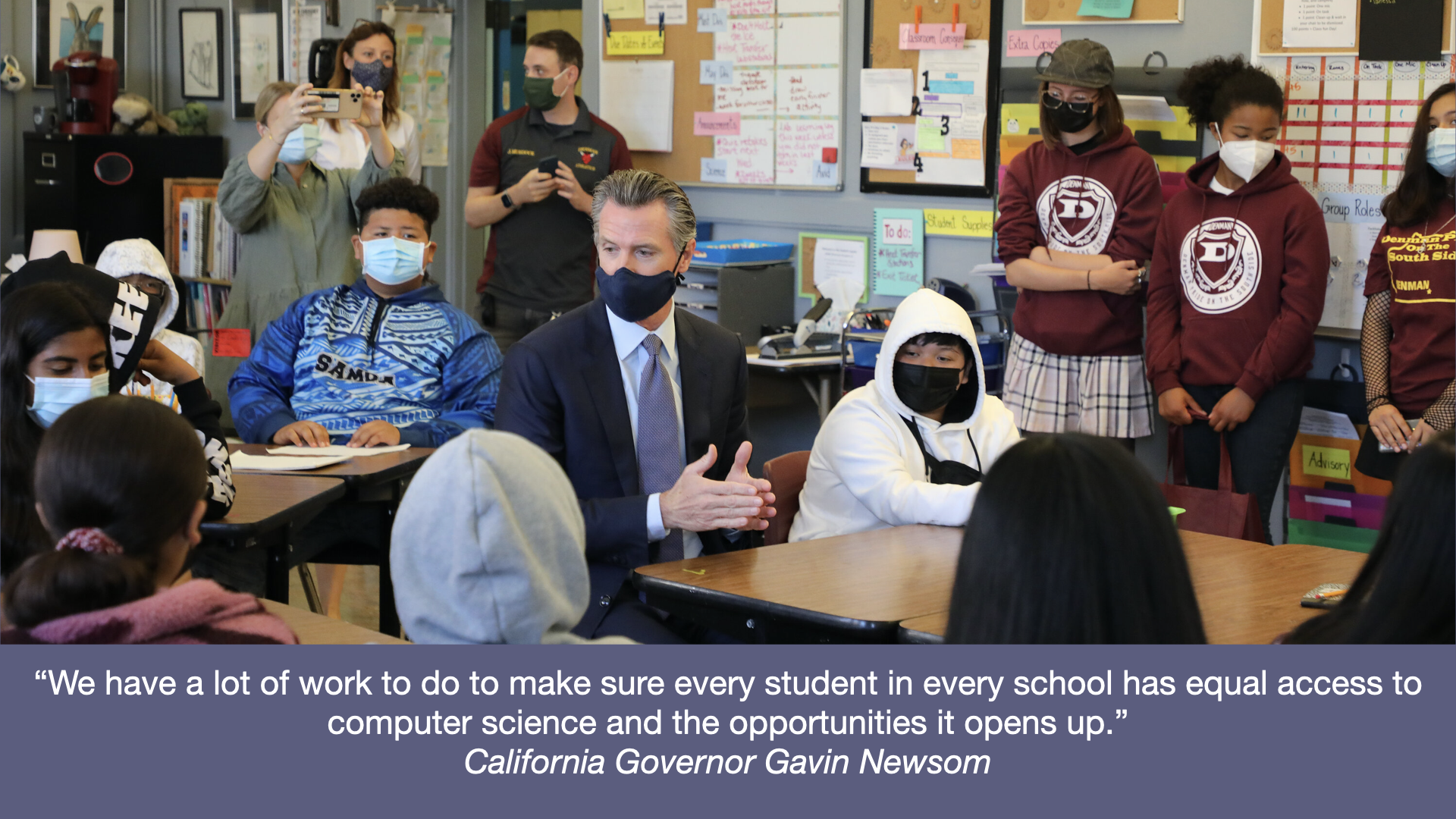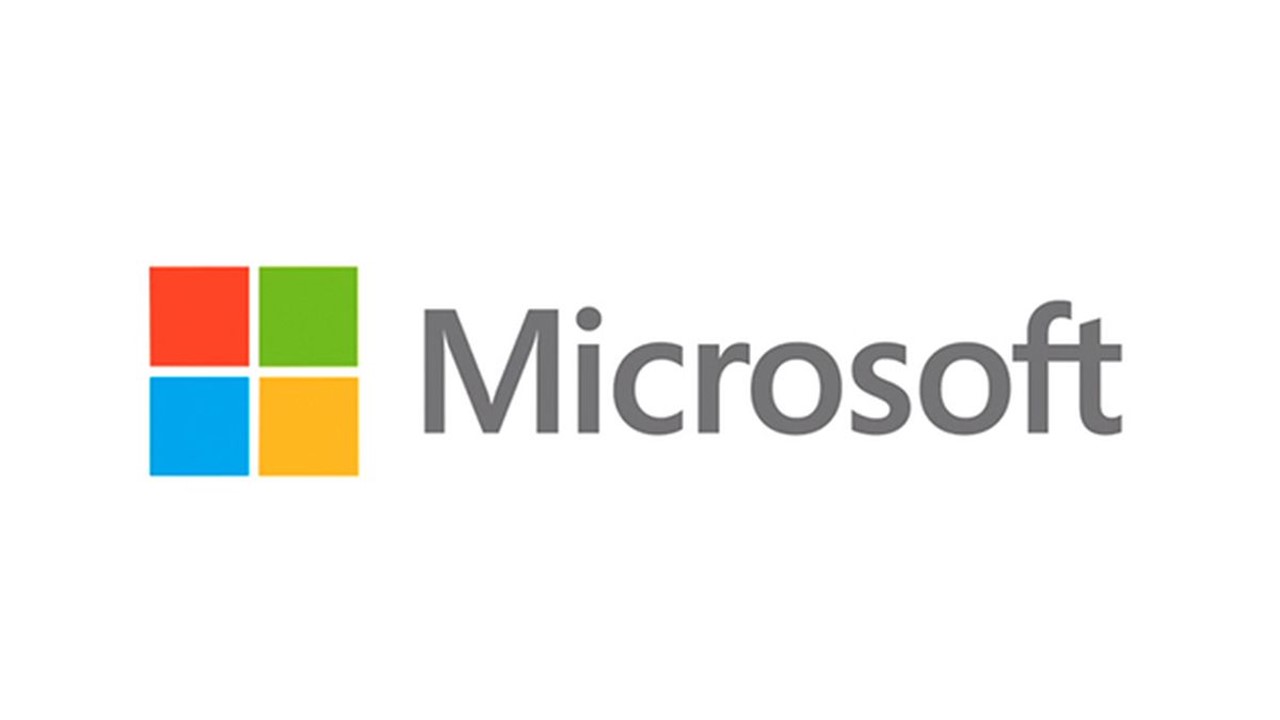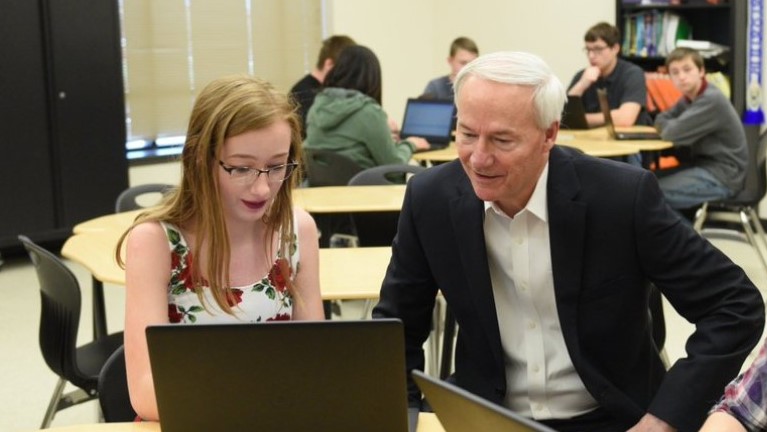
2021-2022 Chairman’s Initiative
Computer Science Education
Arkansas Governor Asa Hutchinson, the 2021-22 National Governors Association Chairman, has worked to enroll more high-school students in computer science classes while aligning K-12 and postsecondary educational institutions with the current and anticipated future needs of industry, gaining national recognition for his efforts in Arkansas. Through his NGA Chairman’s Initiative, K-12 Computer Science Education, Gov. Hutchinson will promote his state’s best practices, in addition to engaging other Governors on their strategies for success, to help increase computer science literacy around the country needed for the jobs of the future.
A Compact to Expand
K-12 Computer Science Education
Educating the next generation of civic leaders, business entrepreneurs and community members has long been a priority of the nation’s Governors. In the 21st century, it is more important than ever that all students have the opportunity to learn computer science to inform them as global citizens, to prepare them for the future of work and to protect them from cybersecurity threats.
Governors have worked with business leaders throughout the pandemic to close the digital divide and expand broadband, devices, internet access and connectivity for millions of students, teachers and families. Ninety percent of middle and high school students now have devices. This change provides a springboard for expanding computer science education, laying a strong foundation for increasing students’ overall digital literacy and giving young people even greater opportunities to succeed in a rapidly changing workforce.
Computing jobs are the largest source of new wages in the United States. Currently, there are more than 600,000 computing job openings nationwide. These jobs are in every industry and every state and territory, and they’re projected to grow at twice the rate of all other jobs. In fact, 91% of open software jobs are outside of Silicon Valley, and with remote work taking on a larger share of the U.S. workforce, computing jobs can more and more frequently be done from any location.
Despite this economic opportunity for current K–12 students, only 51% of public high schools in the United States offer any computer science courses. As the capacity to provide these courses in schools continues to grow, it is important that youth also have access to these learning opportunities outside of school. This can aid in equitably providing computer science skills to all students, regardless of ability, geography, race, gender and socioeconomic status. It is also critical that K-12 computer science education is connected to postsecondary and other workforce pathways to improve digital literacy among learners of all ages, including adult learners.
Six different studies show that learning computer science helps students perform in school or college. Studying computer science in elementary school is correlated with higher test scores in math, science and English. Students who learned to code also demonstrated better executive, planning and problem-solving skills. That’s why 90% of parents report they want their child to learn computer science in school.
As a crucial component of our nation’s security, workforce and economy, computer science education is more important than ever and as a result, it requires high-level executive leadership and engagement. In recent years, many Governors have joined the Governors’ Partnership for K-12 Computer Science and championed efforts to expand access to K-12 computer science education.
With this compact, the undersigned commit to expand K-12 computer science education for students in their states and territories, which may include the following strategies:
Increasing the number of high schools offering computer science courses, which may be supported by: ·Requiring all high schools in the state or territory to offer at least one computer science course. ·Establishing rigorous K-12 computer science standards. ·Creating a state or territory plan for K-12 computer science. ·Implementing clear and flexible certification pathways for computer science teachers. ·Creating programs to provide computer science to preservice teachers.
Allocating state or territory funding to K-12 computer science education, which may be supported by: ·Establishing positions dedicated to computer science in state and local education agencies. ·Allocating funding for rigorous computer science teacher professional learning.
Creating pathways to postsecondary success in computing and related careers, which may be supported by: ·Allowing computer science to satisfy a core graduation requirement. ·Requiring a computer science credit for high school graduation. ·Allowing computer science to satisfy an admissions requirement at institutions of higher education. ·Developing sequenced high school course pathways that support industry needs through skills and recognized certifications.
Providing equitable access to computer science for all students, which may be supported by: ·Improving state data collection, reporting and analysis of student participation in computer science. ·Offering computer science in elementary and middle schools to build student interest and confidence before traditionally underserved populations begin to self-select out of the subject.

NGA Digital Literacy Resources

Lessons Learned In Workforce Innovation: How Six States Are Planning to Advance Digital Skills for Equitable Economic Participation
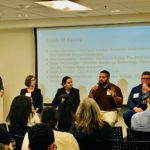
State Postsecondary Education’s Role in Digital Equity Planning
Why Computer Science Education Matters
Jobs that require computer science skills and knowledge will only continue to grow during the 21st century. There are already over 410,000 open computing jobs nationwide – there is a skills gap and employers are unable to fill enough of these openings with qualified candidates. Especially as more remote working opportunities arise, state leaders want to ensure that graduates have the skills they need to find high-paying jobs without leaving the state. At the same time, global competition is also intensifying. Computer science jobs account for a majority of H1B (or “skilled worker”) Visas, because if companies cannot fill their openings with homegrown talent, they will look elsewhere.
Beyond these economic realities, there are also broad benefits to computer science education. Computational thinking and problem-solving skills learned through computer science classes help students succeed in other classes. Students also rank computer science just below the arts when it comes to subjects that they most enjoy. And engaged students are more likely to persist through school to graduate.
Five Goals of Chairman’s Initiative
- To increase the number of high schools offering computer science classes
- To increase the number of Governors who are members of Govs for CS
- To increase the amount of state funding for computer science education
- To increase the number of states requiring at least one computer science credit for high school graduation
- To increase the diversity of students participating in computer science education
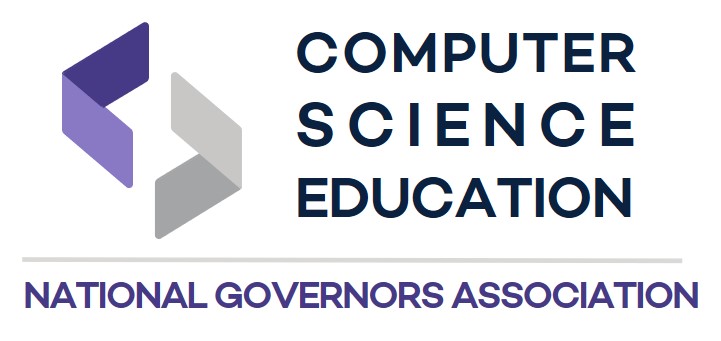
“Arkansas has become known nationally for our computer science education program and, through this initiative, I want to showcase the efforts in other states and show why this matters and how we can expand computer science education.”
Governor Asa Hutchinson
The State of Computer Science Education in the United States
Access to computer science education has been expanding quickly in recent history, but there is still a long way to go before all students will be set up for success in the future economy. Governors can lead the way, and many have been for years. The Governors’ Partnership for K–12 Computer Science (Govs for CS) has 15 members, including nine Republicans and six Democrats.
- 51 percent of public high schools in the United States offer computer science.
- 90 percent of students now have devices thanks to states’ efforts to close the digital divide during the past year. This provides the opportunity to teach students how these devices work by expanding access to computer science education.
- 23 states have policies in place to give all high school students access to at least one computer science class.
- 31 states have dedicated funding for teacher professional development in computer science to build the educator pipeline needed to grow these classes.
- 22 states have computer science plans that set definitions, goals, and timelines. Governors’ offices, in collaboration with state education agencies, can lead in the creation of these state plans.
- 3 states require that all students take a computer science class before graduation. (Those states are Arkansas, Nevada, and South Carolina.)
Dr. Katie Hendrickson of Code.org and Carol Fletcher of the Expanding Computing Education Pathways (ECEP) Alliance present the key findings of the 2021 State of Computer Science Education report.
For additional information, please see the 2021 State of Computer Science report.
Computer Science in the Workforce
NGA Chairman Arkansas Governor Asa Hutchinson joined five other Governors to meet with education and industry experts to discuss bipartisan strategies to bolster K-12 computer science education in Boston on May 19, 2022. Governor Hutchinson announced the release of a toolkit, that the Arkansas Department of Education Office of Computer Science developed with external partners, to assist States in expanding computer science education.
In the first panel Governors heard from industry leaders on Computing and Related Career Pathways. Governor Hutchinson moderated the discussion with: Danner Stodolsky, Vice President, Google Cloud Platform; Yashoda Dadkar, Research Scientist, Amazon Robotics; Olawale Oladehin, Director, Amazon Web Services
Massachusetts Governor Charlie Baker then moderated a discussion with representatives from Girls Who Code. Providing their perspective on expanding K-12 computer science education were: Deborah Hughes, Brookview House CEO; Lori Cullen, Girls Who Code Facilitator; Erica Payne, Girls Who Code Facilitator.
Governors then provided insights into actions they have taken, and challenges faced, in delivering computer science education in their states. Scott Pulsipher, President of Western Governors University moderated the discussion with: Arkansas Governor Asa Hutchinson, New Jersey Governor Phil Murphy, Massachusetts Governor Charlie Baker, New Hampshire Governor Chris Sununu, North Carolina Governor Roy Cooper, Vermont Governor Phil Scott. Governor Hutchinson then led a stakeholder discussion with all attendees on computer science education and the workforce of the future.

state education leaders Convening
On March 17th, 2022 in Bentonville, Arkansas, Governor Asa Hutchinson convened a meeting with Governor Bill Lee, state education leaders, and other national experts to advance K-12 Computer Science Education.

The event focused on strategies that Governors can use to expand K-12 computer science education in their states. During the event, Gov. Hutchinson and Gov. Lee engaged state education leaders from Alabama, Arkansas, Louisiana, Maryland, Missouri, and South Carolina to spotlight different state computer science education initiatives. Both Governors also engaged in a conversation with students from Arkansas, Missouri, Oklahoma, and Tennessee on their computer science education experiences.
A third panel featured representatives from several national organizations focused on computer science education including Code.org, CSforAll, Computer Science Teachers Association, Expanding Computing Education Pathways (ECEP) Alliance, Girls Who Code, and the National Computer Science Education Center.
NGA 2022 Winter Meeting Plenary
At the opening plenary of NGA’s 2022 Winter Meeting, Governor Asa Hutchinson introduced his NGA Chairman’s Initiative on expanding K-12 computer science education and Secretary of Commerce Gina Raimondo moderated a conversation with three CEOs on the link between increased student digital literacy and a stronger workforce.
Panelists:
- Julie Sweet, Chair and CEO, Accenture
- Corie Barry, CEO, Best Buy
- Beth Ford, CEO, Land O’Lakes
Chairman’s Initiative Launch Event
Governor Asa Hutchinson introduced his Initiative, supporting a national effort to expand and improve computer science education, on October 1, 2021 during a speech and question-and-answer session at The National Press Club.
The Governor also spoke about the initiative in his weekly radio address.
“Digital literacy is the foundation our nation needs to succeed in the high-tech economy of the 21st-century in everything from logistics to farming to national security.”
Gov. Asa Hutchinson
State Computer Science Education Resources
Click on a State below for computer science, digital literacy, and/or STEM resources.
- State Requires All High Schools to Offer Computer Science Classes
- State Requires At Least One Credit of Computer Science to Graduate High School
Additional State Resources
- Alabama – Alabama’s Roadmap to STEM Success
- Arkansas – Arkansas Computer Science and Cyber Security Task Force Report
- California – Computer Science Strategic Implementation Plan
- Connecticut – Computer Science Plan
- Georgia – State Plan for Computer Science Education
- Hawai’i – Action Plan for CS Education
- Idaho – Idaho Computing Technology K-12 CS State Plan
- Illinois – Illinois Task Force on Computer Science Education Report
- Indiana – Indiana Computer Science Strategic Plan
- Maine – CS – State Education Plan
- Michigan – State of Computer Science Education in Michigan Report
- New Jersey – Computer Science State Plan
- Tennessee – Tennessee Computer Science State Education Plan
- Utah – Utah Computer Science Education Master Plan
- West Virginia – West Virginia Computer Science Plan
(click on an image to download)
Governors Convening – Denver 2021
On August 25-26, 2021, Governors met in Denver, along with national organizations and businesses, to discuss the fight against COVID-19, economic recovery, and ensuring that all workers and students have the skills they need to succeed.
On Day 2 of the convening, Governor Hutchinson led a discussion of his initiative to expand access to computer science education nationwide. During the conversation, Governors shared efforts they have undertaken in their States.
View their remarks in this playlist, or watch individual videos from: Governor Hutchinson, Governor Hogan, Governor Carney, Governor Mills, Governor Pierluisi, Governor Ducey, and Governor Polis
How Arkansas Has Expanded Computer Science Education
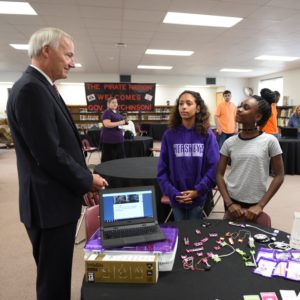
Arkansas is nationally known for computer science education. Governor Hutchinson launched the Arkansas Kids Can Code Initiative in 2015 with a few key policies that helped lay the foundation for success. One policy was a requirement that high schools offer computer science classes and supported that policy with a clear path to licensure for educators to become qualified to teach those classes. Another important step taken by the Department of Education was to offer a financial incentive and support to teachers who become certified with a bonus of $10,000 over five years.
Phase 2 of the Arkansas strategic plan for expansion of computer science education focused on collaboration across sectors that typically exist in separate siloes. Leaders communicated across the higher education system to identify career pathways that should be aligned with K-12 computer science standards and course offerings. Another important, and timely, cross-sector connection was the addition of a cybersecurity focus following the recommendations from the Arkansas Computer Science and Cyber Security Task Force report.
While focused on increasing student participation across the board, particular attention was given to increasing female participation and tracking the racial demographics of students enrolled in these classes. Governor Hutchinson is proud that Arkansas high school computer science enrollment has grown almost tenfold in seven years from 1,100 students in the 2014-2015 school year to almost 10,500 last year. In the future, every Arkansas student will have the opportunity to take a computer science class as part of their high school graduation requirements.







